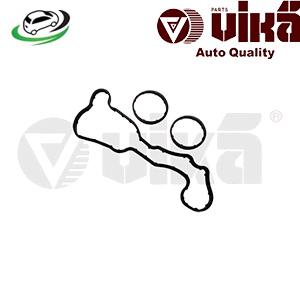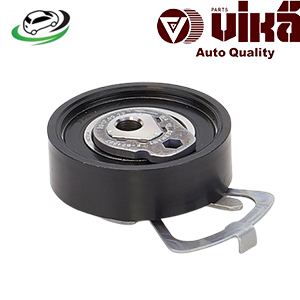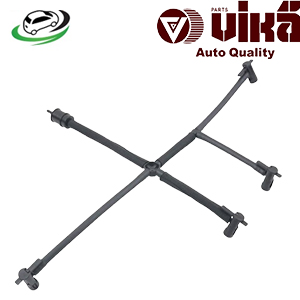-6%
Get Volkswagen Amarok 2.0L Fuel return Line Hose Pipe Injector 03L130235M
The fuel return line hose pipe injector is a part of the fuel injection system in many modern vehicles. It consists of a hose or pipe that connects the fuel injectors (or fuel rail) to the fuel tank, providing a path for excess fuel to return to the tank. This system is commonly found in vehicles with direct fuel injection or common rail diesel systems, as well as some high-performance gasoline engines.
Fuel injectors deliver a precise amount of fuel to the engine’s combustion chamber, but not all the fuel supplied by the fuel pump is used. The unused fuel must be safely returned to the fuel tank to maintain proper fuel pressure and avoid waste. The fuel return line ensures that this excess fuel is recycled back to the fuel tank rather than being lost or creating unnecessary pressure build-up in the fuel rail or injectors.
2. Components of the Fuel Return Line System
Several key components work together to ensure the proper operation of the fuel return line hose pipe injector. These include:
1. Fuel Injectors:
Fuel injectors are responsible for spraying fuel into the engine’s combustion chamber. In some cases, they receive more fuel than necessary, which is why the excess needs to be returned through the return line.
2. Fuel Rail:
The fuel rail is a common manifold that supplies fuel to the injectors. In systems with a return line, excess fuel in the fuel rail is directed back to the fuel tank.
3. Return Hose or Pipe:
The fuel return line is typically made from high-quality rubber, steel, or plastic materials that can withstand the high pressure and temperature of the fuel system. This line connects the injectors or fuel rail to the fuel tank.
4. Pressure Regulator:
The fuel pressure regulator controls the pressure of fuel in the fuel rail by allowing excess fuel to flow through the return line and back to the fuel tank. It plays a crucial role in ensuring optimal fuel pressure for engine performance.
5. Fuel Tank:
The fuel tank stores the fuel that is supplied to the engine. The returned fuel is cycled back into the tank to be reused by the fuel pump.
3. How the Fuel Return Line Hose Pipe Injector Works
The fuel return line hose pipe injector is part of a continuous fuel cycle in which the engine’s fuel injection system is carefully regulated. Here’s a step-by-step look at how the system works:
1. Fuel Delivery:
Fuel is pumped from the fuel tank to the fuel injectors through the fuel lines. The fuel pump pressurizes the fuel before it reaches the fuel rail, where it is distributed to the injectors.
2. Fuel Injection:
Each fuel injector sprays a precise amount of fuel into the combustion chamber, based on the engine’s demand. The amount of fuel injected is controlled by the engine control unit (ECU) and depends on factors such as throttle position, engine load, and speed.
3. Excess Fuel:
In many fuel systems, not all the fuel supplied to the injectors is used during combustion. The unused fuel must be managed to prevent over-pressurization of the fuel system.
4. Fuel Return:
Excess fuel is directed through the fuel return line back to the fuel tank. This fuel passes through the pressure regulator, which ensures that the fuel pressure remains within the desired range for optimal engine performance.
5. Recycling of Fuel:
Once the excess fuel is returned to the fuel tank, it is cycled back into the system, reducing fuel waste and ensuring efficient use of resources.
4. Types of Fuel Return Line Systems
There are several variations of fuel return line systems, each designed for different engine configurations and fuel management needs:
1. Traditional Return Fuel Systems:
In traditional fuel systems, the fuel return line connects the fuel rail to the fuel tank, allowing excess fuel to flow back. These systems are more common in older vehicles and are gradually being phased out in favor of returnless systems in newer models.
2. Returnless Fuel Systems:
In modern returnless fuel systems, fuel pressure is regulated within the fuel pump assembly, eliminating the need for a return line. These systems offer improved fuel efficiency by reducing the amount of fuel that circulates through the system, thereby reducing heat build-up and vapor emissions.
3. Common Rail Diesel Return Systems:
In diesel engines with common rail fuel injection, a return line is used to send excess fuel back to the tank. This is essential for maintaining the high fuel pressures needed for efficient diesel combustion.
5. Benefits of a Fuel Return Line Hose Pipe Injector
A well-functioning fuel return line offers several benefits, all of which contribute to the efficient operation of the engine and fuel system:
1. Fuel Pressure Regulation:
The fuel return line helps regulate fuel pressure within the fuel rail and injectors. By allowing excess fuel to return to the tank, the system prevents over-pressurization, which could damage the fuel injectors and reduce engine performance.
2. Improved Fuel Efficiency:
By recycling unused fuel back to the fuel tank, the fuel return line reduces fuel waste. This improves overall fuel efficiency, ensuring that the engine uses only the fuel it needs while the rest is safely returned for future use.
3. Reduced Emissions:
An efficient fuel return system helps lower emissions by maintaining optimal fuel pressure and reducing fuel vaporization. Excessive pressure in the fuel rail can cause fuel to vaporize, contributing to increased emissions.
4. Enhanced Engine Performance:
Proper fuel pressure regulation ensures that the engine receives the correct amount of fuel, leading to smoother operation, better throttle response, and improved overall performance.
5. Prevention of Overheating:
Circulating unused fuel back to the tank helps prevent heat build-up in the fuel rail and injectors. Without a return line, excess fuel could sit in the rail, increasing the temperature and potentially causing fuel vaporization.
6. Common Issues with Fuel Return Lines
Like any other component in the fuel system, the fuel return line can experience wear and tear over time. Some of the most common issues include:
1. Fuel Leaks:
Fuel return lines can become brittle or cracked due to exposure to high temperatures, pressure, or age. Leaking fuel can reduce system pressure, lead to poor engine performance, and pose a fire hazard.
2. Blockages:
Blockages in the fuel return line can occur due to debris or sediment build-up. A blocked return line can cause fuel pressure to increase, leading to poor fuel atomization, rough engine operation, or even engine stalling.
3. Pressure Regulator Failure:
If the fuel pressure regulator fails, excess fuel may not be properly directed to the return line, resulting in fluctuating fuel pressure, decreased engine performance, or increased emissions.
4. Corrosion:
In some cases, metal fuel return lines may corrode, particularly in older vehicles. Corrosion can weaken the line, leading to fuel leaks and potential safety risks.
7. Maintenance and Replacement of the Fuel Return Line Hose Pipe
Regular maintenance and timely replacement of the fuel return line hose pipe are essential for ensuring optimal engine performance and safety. Here are some important maintenance practices:
1. Visual Inspection:
Regularly inspect the fuel return line for signs of wear, cracks, or leaks. Check for visible fuel puddles or a strong fuel smell, as these can be indicators of a leaking return line.
2. Replace Damaged or Worn Lines:
If the fuel return line shows signs of damage, such as cracks or brittleness, it should be replaced immediately. A failing fuel line can lead to dangerous fuel leaks.
3. Check Fuel Pressure:
Ensure that the fuel pressure is within the manufacturer’s recommended range. If the pressure is too high or too low, it could indicate a problem with the return line or pressure regulator.
4. Use High-Quality Replacement Parts:
When replacing the fuel return line, use high-quality OEM (original equipment manufacturer) parts to ensure compatibility and durability. Poor-quality replacement parts may not provide the same level of performance and reliability.
8. Conclusion
The fuel return line hose pipe injector plays a vital role in regulating fuel pressure, enhancing fuel efficiency, and ensuring the smooth operation of the engine. By recycling excess fuel back to the fuel tank, the return line helps reduce waste, lower emissions, and maintain optimal engine performance. Regular inspection and maintenance of the return line are essential for preventing leaks, blockages, and other issues that can compromise the fuel system. Whether part of a traditional return system or a more modern common rail diesel system, the fuel return line is an integral component that ensures the efficiency and longevity of the vehicle’s engine.
Follow us on Facebook for more parts.




Reviews
Clear filtersThere are no reviews yet.